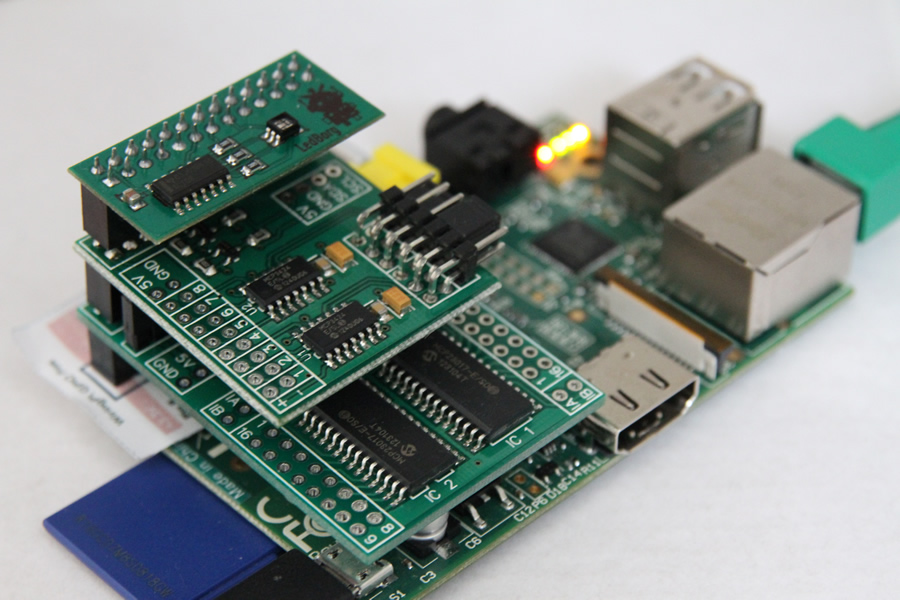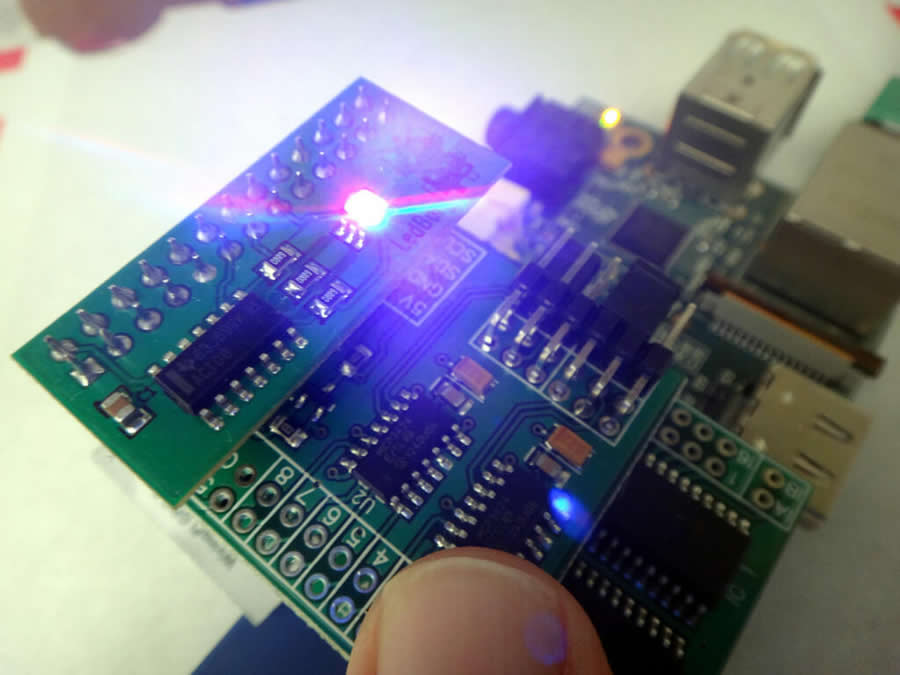AB Electronics IO Boards
There are no shortage of Raspberry Pi IO board manufacturers out there. An entire cottage industry has sprung up around the low cost device to cater for any interface demands the tinkerer or professional might ever have.
AB electronics are one of the more interesting such companies. They manufacturer their own boards in the UK using equipment they built themselves. This is heartening, as Britain's once great manufacturing reputation is a shadow of its former self.
I'm currently playing with a variety of Raspberry Pi boards from AB electronics, which you can find here.
Specifically I have the i-Wire Pi board with a temperature sensor ( it's very easy to use after you install the 1-Wire filesystem driver, you just cat a file! ), the Delta-Sigma Pi ADC, the RTC Pi Real-time Clock Module and the IO Pi 32 Channel Port expander which uses a pair of MCP23017 chips that are directly supported in WiringPi2. As far as digital IO goes, the dual MCP23017 IO Pi 32 should set you up pretty well; if you need more than 32 inputs/outputs then I'd love to know what project you're working on.
On the face of it, AB Electronics boards look pretty much the same as any other IO board, but they have a trick up their sleeve; they stack. Most of the boards use I2C, which is daisy-chainable, and these boards include three jumpers for setting a distinct I2C address for each IC. Simply stack them on top of each other and you'll have what I lovingly dub a "Leaning Tower Of Pi".

The leaning wont be around for long, however, as AB Electronics are in the process of revising their board design to use the mounting hole, and standoffs, to secure a stack of IO boards to the Pi. When compared to solutions like Quick2Wire, or anything else using rinnob cables the AB Electronics boards are extremely neat and tidy and produce a very small footprint. You'll struggle to find a case that fits around the Pi and a selection of IO boards, though!
Another great thing about the stackable system is that you can plug a ribbon cable into the top ( or, in my case, a PiBorg LEDBorg ) and put whatever pins the IO boards don't use to other uses.

The LEDBorg proved an excellent device to top off the AB electronics IO boards. I was able to script up the output of the temperature sensor to produce a variable colour LED readout. This is a pretty simple setup, but at least it demonstrates that the sensor works as intended.
I could also use the output from 3 analogue sensors, adjusted accordingly, to control the brightness of the 3 LEDs within the LEDBorg RGB LED. I spent a long time trying to write a C module for WiringPi to support the MCP3424 ICs on the Delta Sigma Pi board, but thus far I haven't had much luck reading back the multi-byte voltage value.
« Back to index Posted on 2013-04-19 by Philip Howard